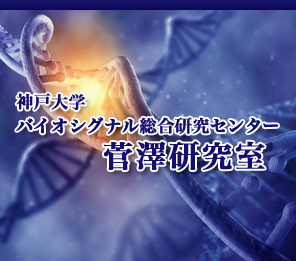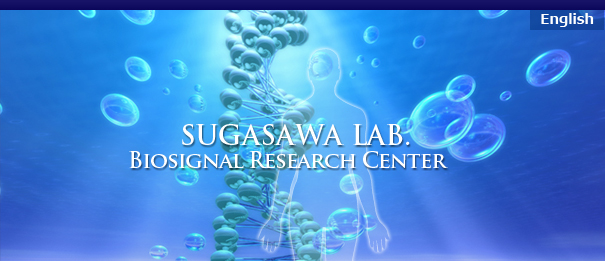講義・セミナー
学術講演会のお知らせ
以下のセミナーを開催いたします。
| 日 時 : | 2009年10月30日(金) 午後 1時30分~ 3時 |
| 場 所 : | 神戸大学・遺伝子実験センター 5階研修室 |
| 講 師 : | Prof. Olga I. Lavrik (Institute of Chemical Biology and Fundamental Medicine, Novosibirsk, Russia) |
| 演 題 : | Study of DNA repair machines by using chemically reactive derivatives of DNA |
講演要旨
Affinity labeling is a prominent method to study protein ensembles of DNA repair. DNA repair processes require a finely tuned action of numerous enzymes and protein factors. Photoaffinity labeling has been developed to study assembly of DNA repair machines around damaged DNA. The main idea of the approach consists in introduction of photoreactive moieties into DNA in the course of DNA transactions by the activity of DNA polymerases to design photoreactive intermediates of DNA repair process. Wide range of photoreactive base-substituted derivatives of dNTPs has been synthesized and used to design photoreactive intermediates of DNA repair either in systems reconstituted of purified proteins or in mammalian cellular extracts. Photoreactive intermediates of base excision DNA repair (BER) have been created in cellular extracts to identify composition of protein assembly interacting with damaged DNA and with the BER pathway intermediates. The main target proteins interacting with central BER intermediate formed in mouse embryonic fibroblast cellular extracts were identified as poly(ADP-ribose)polymerase 1 (PARP1), flap endonuclease 1 (FEN1), DNA polymerase β (Polβ) , apurinic/apyrimidinic endonuclease 1 (APE1) and high mobility gene box protein 1 (HMGB1) The results of crosslinking experiments were combined to functional assay to study regulation of BER. Photoreactive DNA structures were applied to study assembly of nucleotide excision DNA repair.
DNA duplexes with apurinic/apyrimidinic sites (AP sites) were used to trap in cell extracts proteins reactive to AP sites. In HeLa cell extract a prevalent trap product with an apparent molecular mass of 95 kDa was observed. The crosslinked protein was identified by MALDI-MS as the p80-subunit of Ku antigen (Ku). Ku antigen, a DNA binding component of DNA-dependent protein kinase (DNA-PK), participates in double-stranded break repair and is responsible for the resistance of cells to ionizing radiation. AP site containing DNA was used as an efficient tool to test the content of Ku antigen in cell extracts. It was revealed that other cofactor proteins of the BER system – PARP1, XRCC1 and HMGB1 – are also able to interact with AP sites via the same mechanism. This interaction was shown to modulate the efficiency of AP site hydrolysis by apurinic/apyrimidinic endonuclease 1. Therefore, it is likely that one of the functions of BER cofactor proteins consists in regulation of processing of AP sites in DNA repair.

